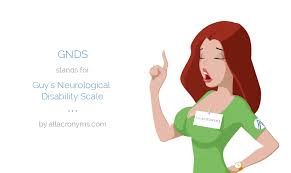On The Scale
Several years ago while waiting in the neurologist’s office, I began to look around. (I’m nosy that way)
Amidst the books, wall posters & models of the brain, I noticed a chart on the bulletin board.
Curious, I peeked closer.
What I saw disturbed me. Downright frightened me.
Turns out the “chart” was acutally the “Expanded Disability Status Scale” or EDSS for short.

The EDSS was developed by Dr. John Kurtzle in the 1950s as a way to measure the disability status of folks with multiple sclerosis.
I scanned the scale to find my place.
I was shocked how far I was to the right. And saddened by how far I’ve progressed from the left.
I got panicky and had a slight freak-out…..How long? How fast? When will?
My mind whirled like the lazy susan in a pantry.
Eventually I collected myself and came back to Earth.
I realized the EDSS is a scale. A guide. NOT a given.
Remember, MS is crazy different for each of us. And wherever you find yourself on this friggin scale doesn’t mean there is more to come. Progression is not definite.
You can fight it.
You can fight it with a medical treatment program, diet, exercise, movement, stretching & attitude.
Now THAT’S a given!
Sorry, I’ll settle down now.

Before realizing a EDSS ever existed, I always saw my disability as a kind of reverse evolutionary scale.
Where the human species evolves moving left to right, I’m regressing the opposite way (R to L) as noted in the illustration.
(The hair on my back further proves my regression)
But low & behold, ol’ Doc Kurtzle’s EDSS has been updated, revised & revamped!
Back in the 1990s, a group of international neurologists felt the existed outcome measures were inadequate. So together they came up with the “Guy’s Neurological Disability Scale.”
When I google imaged it, this is what came up. Honest!……………………..

Hey now!
It’s a Disney character with breast implants!
NOW you know why it’s called the “Guy’s NDS.”
No no no, truth is, the scale was developed at Guy’s Hospital in London. Hence the name.
The GNDS was devised as a simpler, user-friendly scale incoporating a whole slew of disability issues including cognition, vision, fatigue, upper & lower limb function, bowel & bladder and others.
Though I’ve never seen the GNDS scale, it sure seems to capture the full-range of MS more than that scary EDSS ever did!
Whatever scale your doctor consults (if any), don’t be dismayed.
Keep in mind nothing is written in stone.
Keep your wits. And keep moving.
Till next time.
